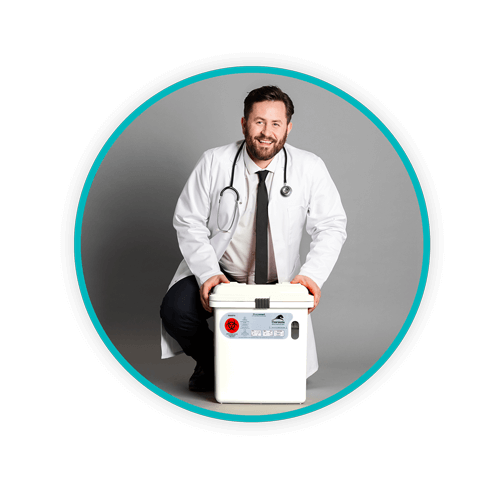Tips to Reduce Your Healthcare Waste

Hospital waste can be defined as any waste containing infectious materials. In recent years, there has been a push towards reducing hospital waste and sourcing sustainable waste management, with green healthcare practices becoming increasingly popular around the world.
Here in the United States, we generate more than 5.9 million tons of medical waste each year – with much of this waste being disposed of improperly, by either the staff or patients, according to Practice Greenhealth. Through the peak of the COVID-19 pandemic, this issue has come to the fore as waste is disposed of via incorrect waste streams or overclassified out of an abundance of caution. As a result, the overall cost of waste disposal has, in some cases, risen dramatically. That is why it’s critical to understand waste stream categorizations, and it’s only natural to start with a look at regulated medical waste, which is defined as any waste that contains/is soaked in blood or potentially infectious material.
Regulated Medical waste can also be labeled as:
- Infectious waste
- Biological waste
-
Biohazard waste
However, state guidelines and definitions can vary regarding the term "infectious." While some states adopt definitions found in federal guidelines from the EPA, OSHA, and DOT, others do not.
In addition to hazardous waste and regulated medical waste, there are many non-hazardous waste items in a hospital that can be recycled, composted, or placed in a general waste container.
WANT TO REDUCE HOSPITAL WASTE IN YOUR FACILITY? HERE ARE FOUR KEY TIPS:
1 / Create clear segregation pathways
2 / Develop education and training for staff
3 / Become a “greener” hospital
4 / Conducting hospital waste audits
Clear segregation pathways
There are six common categories within Regulated Medical Waste:
1. Human blood and products where blood can be poured, dripped, or flaked off materials/tools – this is defined as red bag waste, or infectious waste.
2. Pathological waste (human or animal waste that contains organs, tissues, or body parts intended for disposal)
3. Contaminated sharps
4. Isolation waste
5. Microbiological waste – cultures and stocks of infectious agents
6. Contaminated animal carcasses, body parts, and bedding
Types of medical waste can be defined primarily as either infectious or non-infectious waste. EPA guidelines specify several types of medical waste that can be defined as "regulated" biohazardous waste.
For example, pharmaceutical waste disposal is typically over-segregated by waste vendors; however, 95% of all pharmaceuticals are non-hazardous. Facilities can reduce hazardous waste with correct formulary characterization and proper segregation, resulting in large saving potentials for your facility.
Education and training for staff
It is evident that there is a knowledge gap among hospital employees when it comes to waste. One research paper published in 2017 that surveyed over 1,000 gastroenterologists and endoscopy staff found that less than 1% of the study participants understood the processes and costs of medical waste disposal.
Over-segregation of Regulated Medical Waste (RMW) is estimated to cost hospitals an excess of hundreds of millions of dollars in the USA since RMW can cost 10 to 20 times more than standard waste disposal. With correct segregation, RMW should only make up approximately 10% of a facility’s waste. However, it often amounts to 50% of total waste volume. This highlights the lack of proper segregation within the healthcare industry.
By providing proper waste education and training to your staff, you can significantly reduce costs and save on time and labor. Where to start? An education plan can help set educational goals and targets for your facility and introduce the idea to your staff.
As your waste partner, Daniels Health provides expertise within each facility we work with to train clinical and non-clinical staff and provide e-learning courses and educational resources (e.g., posters and placards to be placed at the point of disposal). This helps to empower your staff, bringing about behavioral change in the correct segregation, and safe and compliant disposal, of all healthcare waste streams.

Becoming a “greener” hospital
The healthcare industry is responsible for approximately 5% of all greenhouse gas emissions globally.
A waste plan is critical to create a more sustainable program within your facility. It is important for facilities to set baselines, identify goals, and implement strategies for more efficient sorting, waste prevention, robust recycling, single-use device reprocessing, composting, and other approaches to reduce the costs and environmental impacts of hospital waste.
With both safety and sustainability at the forefront, a detailed recycling program can encourage hospitals to recycle rather than dispose. The adoption of reusable vs. single-use waste containers can contribute to reducing the overall waste volumes if disposable containers are still in use in the facility, contributing to the reduction in CO2 emissions and greener impact of your facility.
Hospital waste audits
Audits are an essential part of the tool kit to understand what waste is being disposed of, where it is being disposed of, and why events are happening in the facility. An audit can provide department level information, which allows for greater analysis, as opposed to the facility level reporting. This can help determine how often containers are turning and identify turn frequency outside of expected parameters.
Daniels Health is dedicated to safety while also providing guidance on environmentally responsible waste segregation and proper container usage, placement, and disposal techniques. In addition to clarifying waste streams, recommendations on correct bin placements can be identified during waste audits. Facilities should follow guidelines regarding container placement and use those containers to reduce labor and risk of occupational injuries.

The Daniels Impact
Daniels Health offers 35-plus years of experience within the industry, advising facilities on how to better manage their waste streams, and assists with the reduction of hospital waste. Our solutions, products, services, training, treatment, and processing have helped healthcare facilities achieve the highest standards of sustainability worldwide.
Using the Daniels Sharpsmart System results in 28% medical waste reduction. One of our partners, Holyoke Medical Centre, was able to reduce their annual service spend by $14,560 per year by reducing their hospital waste and maximizing sharps, pharmaceutical, and trace chemo containers.
Don’t do it alone, we can help you develop a waste management plan that takes into careful account the many regulatory complexities governing hospital waste reduction – one that meets and/or exceeds federal, state, and local regulations.
